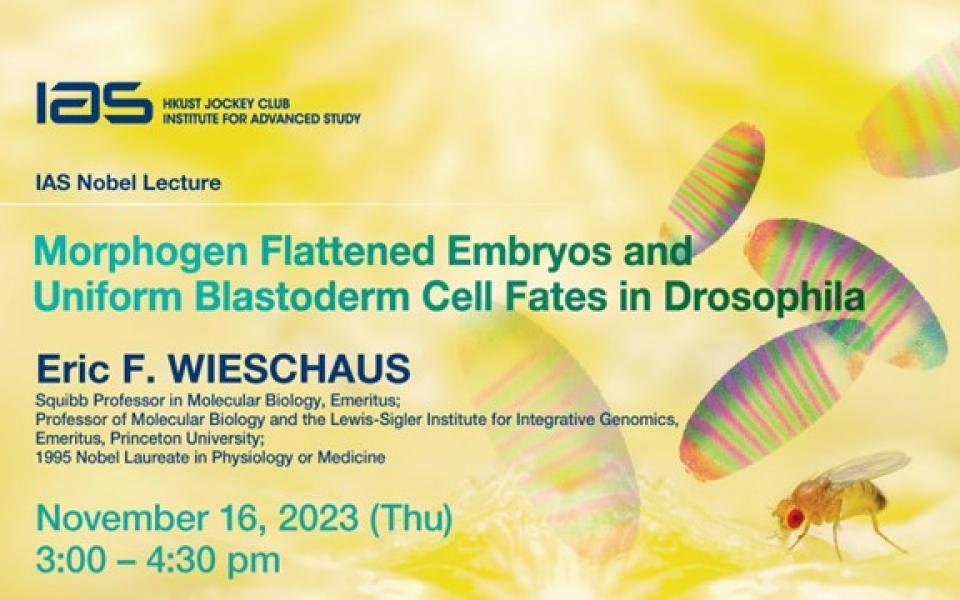IAS Nobel Lecture - Morphogen Flattened Embryos and Uniform Blastoderm Cell Fates in Drosophila
Abstract
Cell fate in the Drosophila embryo is determined by gradients of four transcription factors – Bicoid, Hunchback, Capicua and Dorsal. By flattening these gradients and setting the transcription factors to different expression levels, lines can be generated in which all 6000 blastoderm cells are programmed to the same fate. The speaker and his collaborators are using such “morphogen-flattened” embryos to determine how soon the broad proteomes of differently programmed cells become different from each other. They are particularly interested in maternally supplied proteins that were initially uniform in all cell types and are sensitive to cell type-specific rates of degradation and turnover. They couple these analyses with global measurement of protein lifetime using in vivo labelling and mass spectroscopy. Following the post-blastoderm development of morphogen flatten embryos, they have identified cases where initially uniform primordia give rise to diverse patterns of gene expression and compare these self-organized patterns to the processes that occur during normal development and to the spontaneous patterning mechanisms described by Alan TURING in the 1950s.
About the Speaker
In the late 1970s, Prof. Eric F. WIESCHAUS and Prof. Christiane NÜSSLEIN-VOLHARD carried out large-scale mutagenesis screens to identify genes controlling embryonic development in Drosophila. In contrast to previous genetic analyses, these screens were designed for genomic saturation, i.e., identifying key components in all pathways govern gross morphology, patterning and differentiation. These experiments established a basic “tool box” of maternal factors and signaling pathways that operate in the Drosophila embryo and are in fact conserved with remarkable fidelity in all multicellular organisms. Mutations in the associated genes account for a significant fraction of inherited birth defects in humans and play a major role in cancer. Prof. Wieschaus and his collaborators then went on to elucidate basic features of the Wnt pathway, showing for example, that Wnt signaling modulates levels and nuclear localization of beta-catenin (=Armadillo) and investigating the role of GSK3b and APC in that process. More recent work has focused on the cell biological mechanisms that control cell shape change and movement during gastrulation, and on quantitative biophysical measurements of morphogen gradients during early development. Prof. Wieschaus is a HHMI investigator, a member of the National Academy of Sciences (USA), a foreign member of the Max Planck Society, and the 1995 Nobel Laureate for in Physiology or Medicine.
For Attendees' Attention
Seating is on a first come, first served basis.
